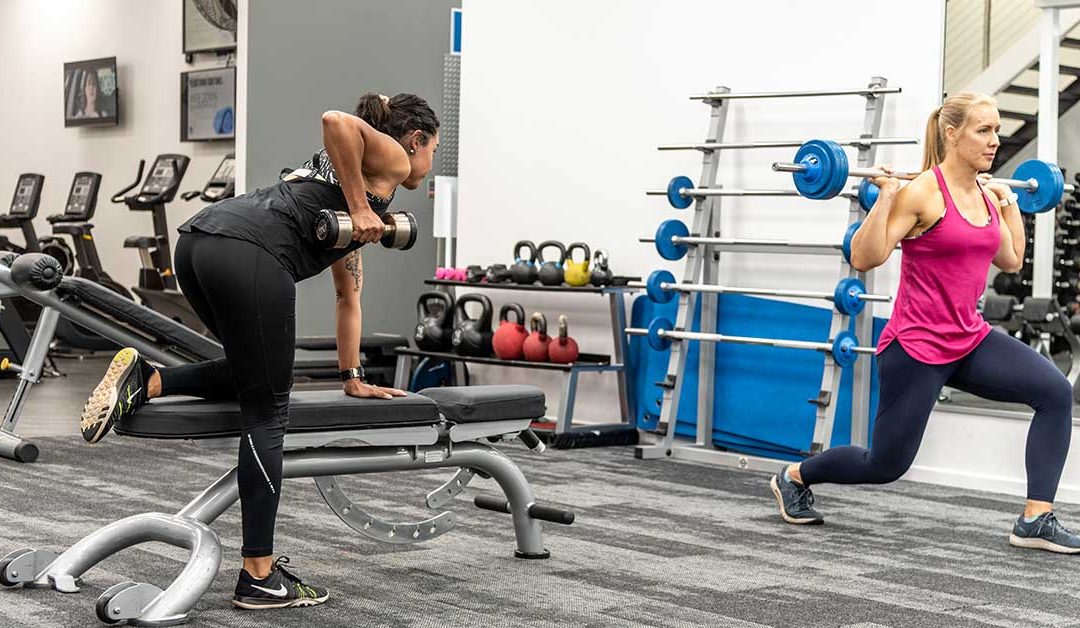The notion that if women commit to weights and strength training they will gain vast amounts of muscle and become bulky and manly, is simply not true.
Firstly, yes – women can gain lots of muscle and adopt a rather masculine physique. However, this is only the result of making a very conscious effort to do so, requiring full focus on diet and training that comes about when you devote your existence to looking this way. It’s the same with men, most men who weight train don’t look like The Rock or old school Arnie. Yes some do, the vast minority, but this is the result of a conscious effort of training every day of eating immense amounts of food and measuring every gram and macronutrient to look this way. No one looks that way by chance.
Let’s get into the science and see just how beneficial strength training is for women and in particular why it is actually better for women to strength train than for men.
Strength training does not always mean lifting weights, we can strength train using our bodyweight. To me, strength training is any type of training that promotes increased building of Type II A and B muscle fibres. This will result in increased power and strength, basically making you a more physically functional human being.
There are 3 different muscle fibre types:
Type I: These are known as slow-twitch fibres and designed to produce low force, power and speed but have a high level of endurance, so they take a long time to fatigue. A marathon runner’s muscle make-up is a high percentage of these muscle fibres.
Type II A: These are fast-twitch oxidative fibres, meaning they are designed to produce sustained powerful and strong contractions for a longer period than type II B and fatigue later. These types of fibres are great for 400m and 800m runners or for sports that require repeat sprinting efforts (think rugby, soccer, AFL, basketball).
Type II B: These are your fast-twitch glycolytic fibres and are used for maximal strength and power like a maximum sprint or maximum lift. They produce the most force and the more of these fibres you have, the stronger and more powerful you will be. However, they do fatigue the quickest, lasting a very short time.
Strength Training and Bone Mineral Density
Women who are going through menopause are at a critical period in respect to their health and setting themselves up for their future health and wellbeing. Around this age the loss of muscle mass becomes accelerated if no intervention is undertaken. The older we become the more muscle mass we will lose if we don’t actively take steps to strengthen our muscles. Loss of muscle mass logically results in decreased muscle function but also bone mineral density. After the 3rd decade of life our bones stop absorbing calcium for maintaining bone mineral density and instead bone density can only be increased and or maintained through high impact physical activity, such as running, jumping and lifting. The larger the impact that can be placed on our bones the bigger the response to grow thicker and denser. This is where strength training comes in. Strength training preserves and produces more of our type II muscle fibres. This allows for an increased capacity for higher impact exercise, like hill sprints or skipping. This higher impact will promote greater responses in our bones. The more Type II fibres we have, as the result from strength training, the greater the stimulus to promote bone mineral density and gain thicker stronger bones
The Strength and Bone Density Process
Strength Training -> More Type II Fibres -> Complete high impact physical activity (sprinting, jumping, crawling) -> Thicker and Stronger Bones
Further Reading
Effects of Aging on Muscle Fibre Type and Size (2004) – Deschenes M.
Type IIB human skeletal muscle fibers positively correlate with bone mineral density irrespective to age (2010) – Cheung WH, Lee WS, Qin L, Tang N, Hung VW, Leung KS.
Differential features of muscle fiber atrophy in osteoporosis and osteoarthritis (2013) – Terracciano C, Celi M, Lecce D, Baldi J, Rastelli E, Lena E, Massa R, Tarantino U.
Interaction Between Bone and Muscle in Older Persons with Mobility Limitations (2014) – L. Ferrucci, M. Baroni, A. Ranchelli, F. Lauretani, M. Maggio, P. Mecocci, and C. Ruggiero
